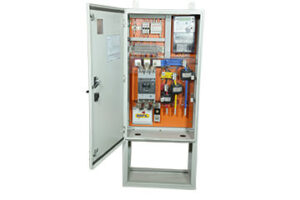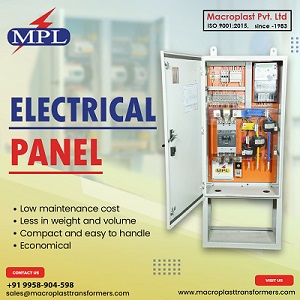Many residential homes depend on the services of their local utility company for constant and uninterrupted electricity. And industrial machines and equipment need defined functions and proper control to achieve their different process goals. In both situations, regular power is required.
Typically, the power that comes from the utility company goes through the electrical panels that are installed in the home or industrial units. These panels act as the central switchboard for distributing the electricity needs in each home.
What is an Electric Panel?

An electrical panel is a service box that is used in buildings to connect the main power line and distributes electrical currents to the different circuits within the building. It combines several electrical devices (main breakers, circuit breakers, and bus bars) that use electrical power for controlling different mechanical functions of industrial machinery or equipment.
The use of fuses and circuit breakers makes sure there are no over-currents during the distribution of power to different circuits. An electrical panel has two main categories: panel structure and electrical components.
Components of Electrical Panel
- Surge arresters. Their role is to prevent utility power or lightning strikes from damaging components inside the panel due to overvoltage.
- Main circuit breaker. The role of this component is to handle 120V–480 voltage in most industrial or commercial buildings or applications. They disconnect the main electrical panel that leads into a home or office.
- Transformers. This component can reduce voltage to 120V for different components depending on the incoming voltage. For example, they can step down the voltage to 24V where incoming power is 120V.
- Programmable Logic Controller (PLC). This is the brain of any electrical control panel. The role of this component is to monitor and control several mechanical processes. It monitors various inputs and outputs to and from mechanized functions of the production equipment.
- Terminal blocks. Their role is to organize and distribute a collection of wires that come from different sources to many electrical devices.
- Relays and contactors. These are on/off switches. They control mechanized functions depending on commands from the PLC. While smaller relays are responsible for controlling fans, and lights, larger relays (contacts) control more advanced functions such as motors.
- Human Machine Interface (HMI). The role of HMI in the control panel is to control or monitor certain functions of the machinery. Common HMIs have video monitors, buttons, joysticks, keyboards, and switches.
- Network switches. This is the communication hub in the electrical panel. These switches are used to establish communication between the PLC and several network devices on the production line.
Types of Electric Panel
Typically, there are four different types of electrical panels that are used for different purposes in residential houses or industrial buildings.
- Main breaker panel
- Fuse boxes
- Main lug panels
- Subpanels
Main Breaker Panel: It is the motherboard of all electrical panels, generally located at the top of the panel. At times, it is also set near the bottom or along one side. Its role includes regulating and controlling all the power of the branch circuit breakers and the electricity consumption within the home.
Fuse Boxes: Also known as consumer units sometimes, fuse boxes are made up of small fuses. They are responsible for preventing overloading within circuits in your home. They govern your electricity.
Main Lug Panels: Often referred to as a sub panel, main lug panels are typically applied downstream of the main circuit breaker. These panels are line wires. The wires run into lugs to annihilate the requirement for the main breaker.
Subpanels: Using a particular circuit to receive energy from the main panel, these electrical panels empower you to control the electrical consumption of members in your home.
Bottom Line
Electric Control Panels have a pivotal role to play in any home or commercial building. Though they last for decades after being successfully installed, you need to keep them in good condition and make sure safety and efficient use of electricity. Get them checked by professionals and replace any components in case of damage immediately. As a Manufacturer of Electrical Panels, Macroplast always took care about the quality of components that we use in it.
Common steps for maintaining electrical service panels are to keep the lid shut, and check from time to time for any signs or dust, moisture, or dirt. Ensure to have routine maintenance done by electricians at least once every two to three years for complete protection and minimize risks.



